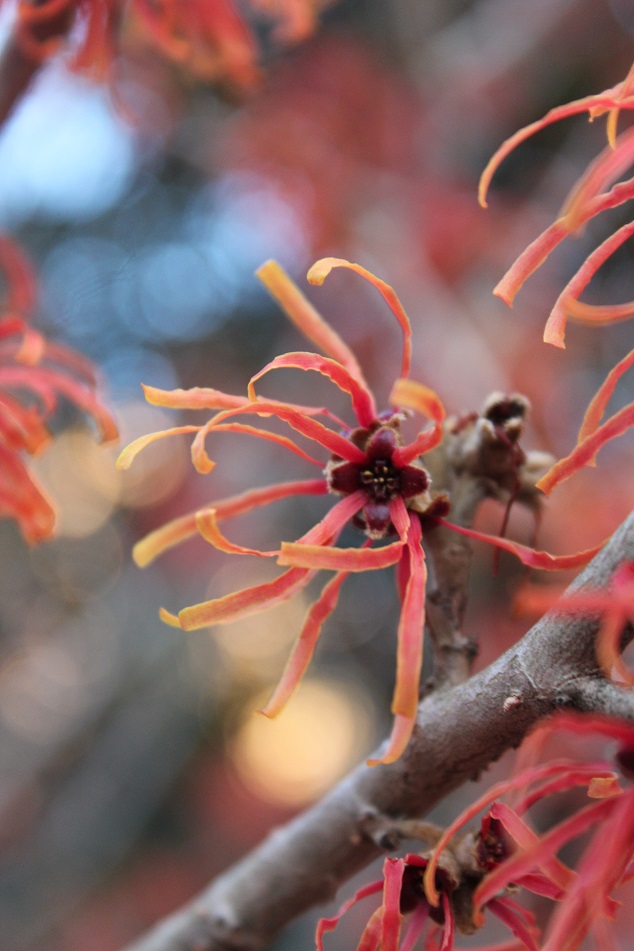The Wonders of Witch Hazel

Witch hazel found in Haverford's Arboretum
Details
Witch hazel, a winter-blooming shrub that populates Haverford’s Arboretum, has assorted uses and a rich history.
If you need a flower fix during the cold winter months, witch hazel just might be your go-to winter-blooming plant. Generally reaching a height of 12 to 15 feet, witch hazel can be considered either a large shrub or a small tree. These hardy perennials with fragrant, wispy yellow to orange flowers are from the family Hamamelidaceae. A year after blooming, the fruit capsules mature and eventually split open to release seeds. Once dry, the witch hazel’s capsules can catapult the small seeds as far as 30 feet. This is the only tree in North America to have flowers, fruit, and next year’s leaf buds all at once. Witch hazel brightens up the forest throughout the autumn and winter months and provides a source of food for birds, deer, and other small mammals that eat its fruit capsules and seeds.
Witch hazel has a long history and has been used by people for centuries. Widely known for its medicinal and cosmetic uses, the extract from the leaves, bark, and twigs of witch hazel have been used as an astringent to treat irritated skin and inflamed tissues for hundreds of years. Native Americans used the plant to treat the common cold, eye and liver conditions, and other illnesses. Early settlers also used the leaves to make tea for various medicinal purposes. Today, witch hazel is used in a variety of products, including ointments, soaps, and lotions.
The name “witch hazel” also originates from folk history. Natives and early settlers used the witch hazel to find sources of water underground. As they walked over the ground that they were surveying, they would carry a forked or bent witch hazel branch, which was used as a divining rod. They would observe if the branch twisted or dipped, which they believed signaled that they had found water. This practice was called “water-witching” and led to the plant’s common name, witch hazel.
If you would like to learn more about witch hazel, please come join the Arboretum Director, Claudia Kent, on Friday, February 21st for a winter-themed walk around the Arboretum featuring various types of witch hazel and other winter shrubs!
Sources:
https://mlbs.virginia.edu/organism/hamamelis_virginiana
https://www.fs.fed.us/wildflowers/plant-of-the-week/hamamelis_virginiana.shtml
https://www.wildflower.org/plants/result.php?id_plant=havi4
http://www.nativetech.org/plantgath/witchhaz.htm



